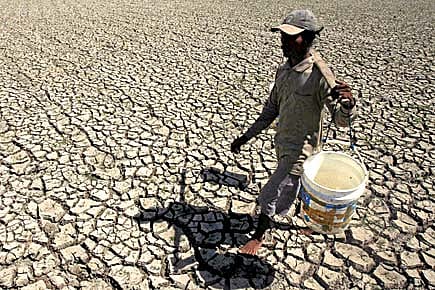Definitions of a Drought

At what point does water scarcity change into drought? It's a tricky one, and it works for news channels
According to our Finance Minister, a quarter of India is facing drought. But at what point does water scarcity change into drought? That's a tricky one. Happily for governments and news channels, it is difficult to define a drought. For example, we may declare a drought in Libya when annual rainfall is less than 180 mm, but in Bali, it may be considered to occur after only six days without rain!
Atmospheric scientists define a drought as a deficit of more than 10 per cent in the nationwide rainfall for the season. Many consider it a rare and random event. This is, if anything, a rare and random truth. The fact is, a drought is a normal, recurrent feature of climate. It can occur in virtually all climatic zones. It is a temporary aberration and differs from aridity since the latter is restricted to low rainfall regions and is a permanent feature of climate. Trivia buffs will be tempted to note there are five kinds of drought.
Meteorological Drought Usually defined on the basis of the degree of dryness (in comparison to some 'normal' amount) and the duration of the dry spell.
Agricultural Drought Links meteorological characteristics to agricultural impacts, focusing on precipitation shortages, differences between actual and potential evapo-transpiration, soil water deficits, reduced ground water and/or reservoir levels. Agriculture is usually the first economic sector affected.
Hydrological Drought Associates the effect of periods of precipitation shortfalls on surface or subsurface water supply. The frequency and severity is often defined on a watershed basin scale. Although climate is a primary contributor, changes in land use, land degradation and the construction of dams affect the hydrological characteristics of the basin.
Socio-economic Drought Brought about by the combination of meteorological, agricultural and hydrological drought. It occurs when demand exceeds supply as a result of a weather-related shortfall in water supply.
Regulatory Drought It occurs in response to or because of a policy decision. For example, the Supreme Court halts all further work on the Narmada dam, causing drought and regulatory floods at the same time.
Lost: The Unstoppable Decline of Congress
05 Dec 2025 - Vol 04 | Issue 50
Serial defeats | Leadership in denial | Power struggles
Expectedly, all the five kinds of drought are currently being experienced in different parts of India.
